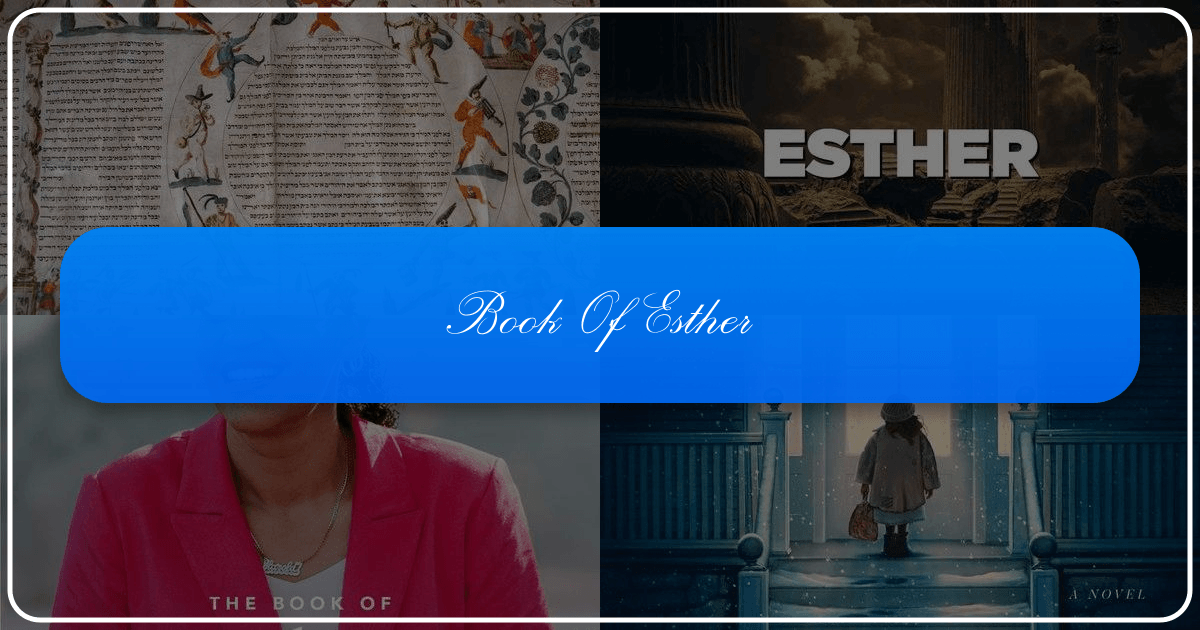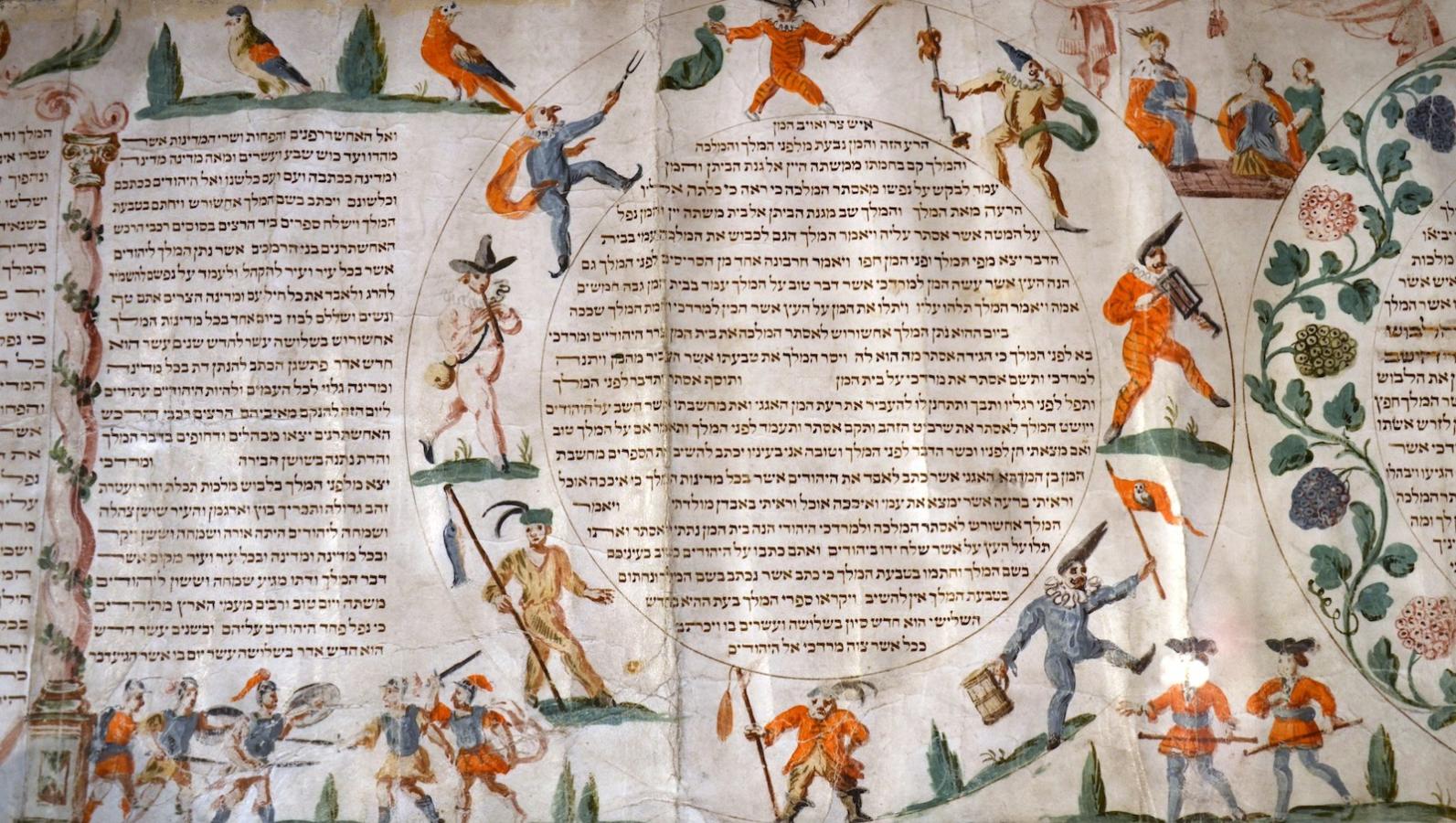The Book of Esther: Fact or Fiction? A Multifaceted Exploration

The Book of Esther, a captivating tale of intrigue, courage, and divine intervention, presents a unique challenge to biblical scholars and historians alike. Its placement within the biblical canon, its narrative style, and the lack of corroborating extra-biblical evidence have fueled centuries of debate regarding its historicity. This exploration delves into the Book of Esther, examining its narrative, historical context, and varied interpretations, aligning the discussion with the themes commonly found on websites dedicated to books, authors, reading, libraries, and cultural impact.

The Book of Esther: A Narrative Overview
The Book of Esther, a relatively short book in the Hebrew Bible (Ketuvim), unfolds in the opulent setting of the Persian Empire during the reign of King Ahasuerus (widely believed to be Xerxes I). The narrative centers on Esther, a Jewish woman who becomes queen after the dismissal of Queen Vashti for her defiance of the king. Esther’s rise to power is orchestrated by her cousin Mordecai, a loyal and observant Jew.
The story takes a dramatic turn with the introduction of Haman, an Agagite (descendant of Agag, the Amalekite king) who rises to become the king’s chief advisor. Haman’s hatred for Mordecai, stemming from Mordecai’s refusal to bow down to him, escalates into a plot to exterminate all the Jews within the Persian Empire. Mordecai discovers Haman’s evil plan and urges Esther, who has concealed her Jewish identity, to plead with the king for her people’s salvation.
Esther, risking her life, reveals her Jewish heritage to the king and exposes Haman’s conspiracy. A dramatic reversal ensues: Haman, the architect of the genocide, is executed on the very gallows he intended for Mordecai. However, the king’s decree cannot be overturned, so a counter-decree is issued, granting the Jews the right to defend themselves. The story culminates in the Jews’ successful defense and the establishment of the Purim festival to commemorate their deliverance.

This gripping narrative, filled with suspense, political machinations, and reversals of fortune, has captivated audiences for millennia. However, the question of its factual basis remains a subject of ongoing scholarly discussion.
Authorial Style and Inspirations: A Literary Perspective
The Book of Esther’s literary style differs significantly from other biblical books. It lacks explicit mentions of God, instead focusing on human agency and political maneuvering. This has led some scholars to classify it as a “novella” within the genre of wisdom literature, comparing it to secular works like “One Thousand and One Nights.” The narrative’s emphasis on plot twists, character development, and dramatic irony is characteristic of storytelling traditions across various cultures and time periods.
The lack of divine intervention contrasts sharply with many other biblical narratives, leading to speculation about its author’s intentions. Some theories propose that the story is a deliberate reworking of the Moses-Exodus narrative, transplanting the theme of deliverance from oppression to a different historical and cultural setting. Others suggest links to ancient Mesopotamian mythology, drawing parallels between Mordecai and the god Marduk, and Esther and the goddess Ishtar, portraying a struggle for supremacy within the Persian court.

Regardless of its origins and inspiration, the Book of Esther demonstrates a sophisticated understanding of narrative techniques and storytelling strategies. The author masterfully crafts suspense, employing dramatic irony and unexpected plot twists to keep the reader engaged. The story’s enduring appeal suggests a universal resonance that transcends its specific historical and religious context.
Historical Context and Accuracy: Fact versus Fiction
While the identification of King Ahasuerus with Xerxes I is widely accepted among scholars, the details of the Esther narrative are much more contested. The precise number of provinces (127) mentioned in the text, the specific dates given, and the absence of any mention of Esther in extra-biblical sources raise questions about the story’s historical accuracy.
The King and His Empire:
The identification of Ahasuerus with Xerxes I provides a solid anchor for the narrative’s setting. The Persian Empire under Xerxes I spanned vast territories, encompassing regions mentioned in the Book of Esther. However, the details of the empire’s administrative structure (the number of satrapies and provinces) differ between the biblical account and extra-biblical records (e.g., Herodotus). These discrepancies don’t necessarily negate the story’s potential historical basis, but they do raise questions about the accuracy of certain details.
Chronological Inconsistencies:
The specific dates mentioned in the Book of Esther (the third and seventh years of Ahasuerus’s reign) correspond to periods in Xerxes I’s reign when he was known to be in Susa, supporting the possibility of a connection to historical events. Furthermore, the period between these events mirrors the timeline of Xerxes’s military campaigns against Greece.
However, there are unresolved problems relating to the timeline in the Book of Esther. The lack of explanation for a significant narrative gap, and the impossibility of reconciling Esther’s existence with that of Amestris, Xerxes I’s known queen, poses significant challenges.
The Absence of Corroborating Evidence:
Perhaps the biggest challenge to the Book of Esther’s historicity is the absence of any extra-biblical evidence confirming the events it narrates. No Persian records mention the mass extermination of the Jews, or the rise of a Queen Esther who was instrumental in their salvation. This lack of evidence has fueled skepticism, leading many scholars to view the story primarily as a religious or literary work, rather than as a strictly historical account.
The Book of Esther in Jewish and Christian Traditions: Diverse Interpretations
The Book of Esther holds significant religious and cultural importance in both Judaism and Christianity, but its interpretation varies widely. In Judaism, the book is highly esteemed, with some scholars considering it second only to the Torah in importance. It is central to the celebration of Purim, a joyous festival commemorating the Jews’ deliverance.
Within Christian traditions, however, the reception of the Book of Esther has been less uniform. Some denominations have acknowledged its literary and theological value, while others (such as Martin Luther) have expressed reservations or outright rejection. This diversity reflects differing perspectives on the nature of biblical inspiration and the relationship between faith and historical accuracy.
These different interpretations illustrate the complexities involved in understanding and interpreting the Book of Esther. The story’s lasting impact on religious and cultural traditions speaks volumes about its resonance, regardless of its precise historical veracity.
Theological Interpretations:
The Book of Esther’s theological interpretation is also a point of divergence. The absence of explicit divine intervention has prompted diverse theological readings. Some view the book as demonstrating God’s hidden hand in history, working through human agency without obvious miracles. Others see it as a celebration of human resilience and courage in the face of overwhelming adversity. Still others highlight the book’s themes of justice, redemption, and the importance of faith in overcoming seemingly insurmountable obstacles. These varied interpretations demonstrate the richness and complexity of the text’s theological potential.
Cultural Impact and Adaptations: An Enduring Legacy
The Book of Esther’s enduring popularity is evident in its numerous adaptations across various media. The story has been retold in countless plays, operas, films, and novels, each offering its own unique interpretation of the narrative and its themes. This adaptability attests to the book’s enduring cultural significance, which resonates with audiences despite—or perhaps because of—the ongoing debate regarding its historicity. Its adaptability demonstrates the enduring power of its themes to be translated and reinterpreted across vastly different artistic mediums.
Adaptations across Media:
The story of Esther has inspired countless artistic interpretations, from the classic stage plays of Racine and Handel to modern films and novels. These adaptations demonstrate the versatility of the narrative, enabling its central themes to be reimagined within various cultural contexts. The enduring popularity of these works highlights the story’s ability to transcend specific historical contexts, resonating with contemporary audiences on several levels.
Conclusion: Navigating the Complexities of Esther
The Book of Esther remains a fascinating and complex text. The debate surrounding its historicity highlights the challenges involved in interpreting ancient texts, particularly those lacking external corroboration. While some scholars view the story primarily as a work of fiction, others highlight its compelling historical parallels and internal consistency. Ultimately, the interpretation of the Book of Esther depends on individual perspectives and approaches to biblical interpretation. Whether viewed as fact or fiction, its enduring cultural and religious impact is undeniable. The story’s universal themes of courage, resilience, and hope continue to resonate with readers and audiences worldwide, ensuring its place as a significant work of literature and a cornerstone of religious and cultural tradition. The complexities surrounding its historical accuracy only serve to enrich its discussion and interpretation, making it a rich and rewarding text for diverse audiences.